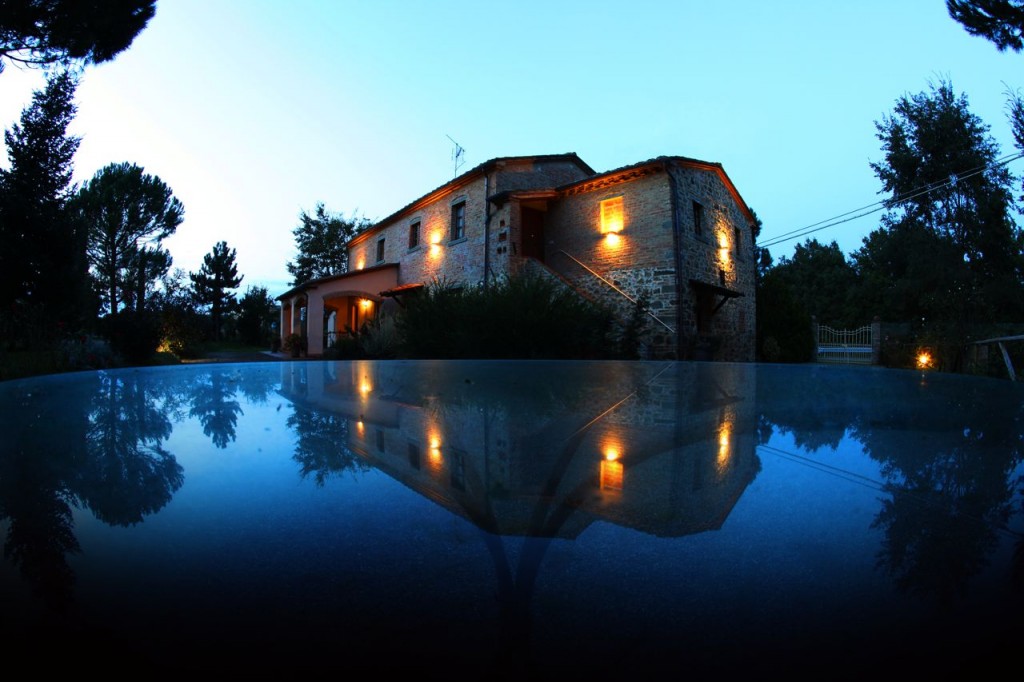Content
Alcohol use disorder, which includes alcohol dependence, is defined the WHO’s International Classification of Diseases . Alcohol use disorder refers to drinking of alcohol that causes mental and physical health problems. In the chart we see the relationship between average per capita alcohol consumption – in litres of pure alcohol per year – versus gross domestic product per capita, across countries. The charts show global consumption of spirits, which are distilled alcoholic drinks including gin, rum, whisky, tequila and vodka. Again, the prevalence of drinking across North Africa and the Middle East is notably lower than elsewhere.
Even experiencing one of these symptoms of alcoholism should be a cause for concern. If you are experiencing two or more of these symptoms, you should get an evaluation from a medical professional who can diagnose whether you have an alcohol addiction. Knowing the risk factors for alcoholism helps to identify if you are more susceptible to developing the disease. To diagnose alcoholism, doctors evaluate patients using criteria from the Diagnostic and Statistical Manual of Mental Disorders .
- Alcohol intoxication results as the amount of alcohol in your bloodstream increases.
- In low doses, alcohol can lower anxiety and inhibitions, promoting a relaxed state.
- Wine contains around 12% of pure alcohol per volume so that one liter of wine contains 0.12 liters of pure alcohol.
- This characteristic is inconsistent with the medical model, which implies that alcoholism is either present or absent—as is the case, for example, with pregnancy or a brain tumour.
- If someone has a mental health disorder, they may use alcohol to cope with the symptoms.
People with cognitive impairment are at an increased risk of developing alcoholism. Impaired cognitive function can cause young people to make choices that favor immediate gratification, such as binge drinking, leading to an alcohol use disorder. There are many risk factors involved in the potential for developing alcoholism.
Studies have identified other genes in which variants impact risk for alcoholism or related traits, including GABRA2, CHRM2, KCNJ6, and AUTS2. Gender affects a person’s rate of problematic drinking and their likelihood of experiencing alcohol-related consequences. Self-medicating also happens when people are too scared to confront their feelings and talk to someone about them. If you or a loved one are seeking help for alcoholism, there is help available.Contact a treatment provider and find rehab facilities nearby.
Who Is At Higher Risk For Alcoholism?
During these times, you’re looking to make new friends and develop relationships with peers. The desire to fit in and be well-liked may cause you to participate in activities that you normally wouldn’t partake in. Before you know it, you’re heading to every company happy hour, drinking more frequently and even craving alcohol after a long workday – all warning signs of AUD.
Contact a health care provider if you have questions about your health. These adults have had to adapt to a world very different than the one their childhoods prepared them for. More than 85 percent of U.S. adults have had a drink at some point in their lives, and more than half have had a drink this month. If you find yourself rationalizing your drinking habits, lying about them, or refusing to discuss the subject, take a moment to consider why you’re so defensive.
Most of the rats in the experiments chose the sweetened water. Swedish and American researchers have conducted an experiment with rats to investigate this issue. Even when rats were given an electric shock if they pushed a pedal to be given a sip of alcohol, a small percentage of the animals continued to push the pedal. Chronic severe alcoholics are the rarest and most dangerous type. Continuing to drink despite health, financial and family problems. Treatment programs and onlinealcohol rehabare available if you are facing an alcohol problem. More than anything, patients need to know that they will receive the best possible care.
Roughly 80% are from families that struggle with multigenerational alcoholism. The Woods at Parkside successfully treats substance abuse and co-occurring mental health disorders using a multi-faceted approach that takes into https://ecosoberhouse.com/ consideration the uniqueness of each individual. It’s common for people with a mental health disorder such as anxiety, depression, schizophrenia or bipolar disorder to have problems with alcohol or other substances.
A Variety Of Factors
Scientists estimate that 40-60% of a person’s vulnerability to alcoholism is due to these genetic factors. The same thing goes for interpersonal consequences – events or circumstances even more severe than getting sick from drinking once in high school or college . It is not uncommon for people to get behind the wheel of a car after having one too many cocktails, and get pulled over from Driving Under the Influence . Getting a DUI does not necessarily mean that you are an alcoholic. It means that you exercised extremely poor judgement and put other lives in danger. Those who are not struggling with an alcohol abuse disorder will learn from this mistake and avoid drinking and driving in the future.
Right as they entered adulthood, 9/11, the war in Iraq, the recession, and Hurricane Katrina all hit, shattering their world. In American culture, alcohol is used for celebration and commiseration alike. It has a sort of therapeutic role in our society; how often have you said after a long day or a stressful situation, “I need a drink”? Too often, we use alcohol in general and drunkenness in particular as a coping mechanism. According to JSTOR, colonists in 1770 drank an average of three and a half gallons of alcohol a year, about double the modern rate. By 1830, that number had doubled, and colonists over the age of 15 drank more than seven gallons of alcohol a year.
This representation may influence the subconscious, causing people to drink to achieve the promised emotions of relaxation and contentment. Peer pressure in teenagersPeer pressure is a typical problem for teenagers and young adults.
Articles On Alcohol Abuse Risks & Complications
Drinking from an early age can cause long-term problems that can even go into your 40s and 50s. Alcohol treatment professionals work with you to create a personalized comprehensive recovery plan with measurable goals. Comprehensive recovery plans may include inpatient or outpatient treatment, medication-assisted therapy, counseling and support groups. If you or a loved one is struggling with an alcohol use disorder, help is only a phone call away. Contact a treatment provider now to learn about available treatment options.
Relapsing does not mean you’ve failed and cannot overcome alcoholism. It makes you aware of triggers and may motivate you to seek additional help from a counselor or support group. Participating in ongoing treatment methods provides you with a greater chance why are people alcoholics for long-term sobriety than those who do not continue recovery with maintenance programs. Additionally, alcohol manufacturers are bombarding the general public with advertisements. Many of these ads show drinking as an acceptable, fun and relaxing pastime.
What Are The Dangers Of Too Much Alcohol?
In fact, there are dozens of risk factors that play a role in the development of an alcohol addiction. These risk factors interact differently in every individual, leading to alcohol use disorders in some and not in others. The more you turn to alcohol to ease feelings of pain and hardship, the more your body becomes tolerant to the drug and relies on its effects.
The chart shows the age distribution of those dying premature deaths due to alcohol. Both are measured in terms of pure alcohol/ethanol intake, rather than the total quantity of the beverage. Wine contains around 12% of pure alcohol per volume so that one liter of wine contains 0.12 liters of pure alcohol. Beer contains around 5% of pure alcohol per volume5 so that one liter of beer contains 0.05 liters of pure alcohol. This means that 5 liters of pure alcohol equals 100 liters of beer.
- This causes the body to crave alcohol in order to feel good and avoid feeling bad.
- Alcohol rehab services for yourself or a loved one, don’t wait any longer.
- Although those in lower income or educational status groups often drink less overall, they are more likely to have lower-frequency, higher-intensity drinking patterns.
- Alcohol use disorder, which includes alcohol dependence, is defined the WHO’s International Classification of Diseases .
- MedTerms medical dictionary is the medical terminology for MedicineNet.com.
You may need inpatient medical , residential rehabilitation , outpatient intensive therapy or outpatient maintenance. Social and family customs, culture, poor parental support, and peer pressure can play roles in alcohol addiction, the Mayo Clinic says. The 2018 National Survey on Drug Use and Health found 9.2 million men and 5.3 million women in the U.S. had an alcohol use disorder. A new, first-of-its-kind study reveals a key link between alcohol consumption and poor sleep quality in a large sample of men and women. Complications of this condition may include memory loss, confusion, mental health issues, and problems with work or home life. Some signs and symptoms of alcohol misuse may be due to another condition. Some people experience some of these signs and symptoms but are not dependent on alcohol.
Common Signs And Symptoms Include:
But even if you’re able to succeed at work or hold your marriage together, you can’t escape the effects that alcoholism and alcohol abuse have on your personal relationships. Drinking problems put an enormous strain on the people closest to you. Drinking problems can sneak up on you, so it’s important to be aware of the warning signs of alcohol abuse and alcoholism and take steps to cut back if you recognize them.
- No matter how many risk factors are present in an alcoholic’s life, treatment is still possible.
- For some, alcohol gives off feelings of pleasure, encouraging the brain to repeat the behavior.
- Measuring the health impact by mortality alone fails to capture the impact that alcohol use disorders have on an individual’s wellbeing.
- Getting drunk after every stressful day, for example, or reaching for a bottle every time you have an argument with your spouse or boss.
- Additionally, many psychological disorders reduce an individual’s ability to perceive the reality of their drinking or acknowledge risks and warning signs.
Chronic severe alcoholics have the highest rate of family members who also experience alcohol dependence at77%. Researchers foundthat about 62% of functional alcoholics work full-time, 3.6% are in school full-time, and 5% are retired.
The results in the chart show the increased risk of developing alcohol dependency for someone with a given mental health disorder . For example, a value of 3.6 for bipolar disorder indicates that illicit drug dependency became more than three time more likely in individuals with bipolar disorder than those without. The risk of an alcohol use disorder is highest in individuals with intermittent explosive disorder, dysthymia, ODD, bipolar disorder and social phobia. Causes of alcoholism range from social and environmental to genetic and psychological factors.
Tolerance: The 1st Major Warning Sign Of Alcoholism
Excessive or inappropriate consumption of alcohol is not necessarily the same as alcohol dependence. A person with this condition does not know when or how to stop drinking.



























